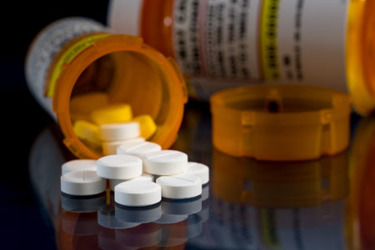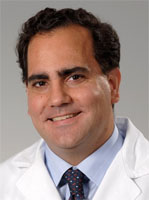A New Pain Treatment Requires Accurate And Reliable Data

By Ed Miseta, Chief Editor, Clinical Leader

South Rampart Pharma aims to deliver a new, affordable treatment for pain that will avoid the issues with currently marketed products. Opioids are highly addictive; patients taking excessive amounts of acetaminophen can develop liver toxicity; and NSAID over-exposure risks kidney toxicity, gastrointestinal (GI) bleeding, and worsening of high blood pressure in patients with hypertension.
The company's lead pain asset, SRP-001, is not addictive and avoids acetaminophen's liver toxicity while using a similar mechanism of action in the brain for pain relief. The company's investigational drug has already completed extensive animal studies with compelling results and is currently amidst a Phase 1 trial in humans. The company is now preparing to move forward with a Phase 2 trial in 2023 that it hopes will yield positive results.

The current two-part Phase 1 trial is a randomized, double-blind, and placebo-controlled study. Part 1 is a single ascending dose that will escalate from 300 mg to 4,000 mg, with eight volunteers per cohort. Six volunteers will receive the active drug, while the remaining two will receive a placebo. Part 2 is a multiple ascending dose study with the same number and ratio of volunteers per cohort. Thus far, 40 patients have been dosed with no adverse events reported and a robust PK profile with a half-life of 4 to 5 hours.
Bazan notes the Phase 2 trial currently being designed is an acute pain model that will also be randomized, double-blind, and placebo- and comparator-controlled. The multi-center trial will evaluate the safety and efficacy of the treatment in subjects undergoing a 3rd molar (wisdom tooth) extraction. One of the challenges the company faced was deciding how to define pain in patients and prove the treatment was successful at reducing it.
"As we go into the clinic with our Phase 2 trial, we have the confidence to meet the study's endpoints because the mechanism of action for how SRP-001 works in the brain is already clinically validated — we have simply bioengineered away the toxicity and simultaneously enhanced its efficacy," says Bazan. "This will hopefully translate to a much safer pain relief solution for the patients. Still, we need robust data to present to regulators. To help us gather that data, we went to Lotus Clinical Research, which we consider the premier group with the most experience designing such pain studies in the U.S."
A Partner Specializing In Pain
Bazan and his team concluded that dental extraction is the most effective, efficient, and reliable model for measuring acute pain because of its ease to perform in young subjects with few or no comorbidities and the highly reproducible endpoints. It is better than soft tissue injury, bunionectomy, abdominoplasty, or mammoplasty.
Many large and medium-sized pharma companies have used Lotus Clinical Research to manage pain trials. Still, South Rampart had to determine the best pain model to use in its Phase 2 study. The wisdom tooth pull was determined to be the most reliable pain model, with minor variability and the highest signal-to-noise ratio. This procedure is typically performed on young people in their twenties. South Rampart Pharma will focus on such patients who have no comorbidities, diabetes, hypertension, or cardiovascular disease, allowing for cleaner endpoints.
“There are dental clinics where molar extraction is conducted,” he states. “At those clinics, wisdom teeth are pulled at a high rate, in some cases up to 60 patients a month per center. We believe that will enable us to recruit patients for the study quickly. The Phase 2 study will involve two doses of SRP-001 with either acetaminophen or oxycodone as the comparator and a placebo.”
The study's primary endpoint will involve using a SPID6 (summed pain intensity difference from hour 0 to 6) scale, which Bazan notes is an industry standard. Secondary endpoints will measure added pain intensity for time intervals ranging from 0 to 2 hours up to 4 to 6 hours; time confirmed perceptible pain relief; total rescue medication consumption at 6 hours and 24 hours; Patient Global Assessment (PGA) of pain control; categorical pain relief on a 5-point scale; and total pain relief integrated over the observation period.
“We know different patients will give a different rating to the amount of pain they are experiencing,” says Bazan. “The level of pain in an individual can be a subjective measure. For example, one person might rate their pain level an 8 (with 10 being the highest) while another might rate the same pain a 5. We felt the best way to eliminate that perceived difference in pain levels would be to look at the pain intensity difference. If a patient experienced half as much pain after a period of 4 hours, it would not matter if that decrease went from 8 to 4 or from 6 to 3. The result would still be the perceived pain levels being cut in half. Our goal is to objectify that pain level as much as possible.”
Bazan states Lotus helped his company as a consultant, site, and CRO. They are helping with the study design and the determination of study arms, endpoints, analysis, and inclusion/exclusion criteria.
Partners Considered
Many smaller biotech companies will eventually seek a larger pharma partner to help through the more complex and expensive clinical studies. South Rampart Pharma is no exception. Bazan notes that part of its management team features Josh Blacher, who helped manage Teva Innovative Ventures, Teva Pharmaceutical's venture capital arm. Some of the usual suspects in the pain arena have already been approached by the company. South Rampart Pharma is already in discussions with some of them and is also focusing on the studies and on building long-term value for its shareholders.
“In terms of commercial partnerships, we have intentionally held off thus far in inking any deals,” says Bazan. “We first aim to deliver solid results in the clinic, which will no doubt be a big value driver for our stakeholders and, concurrently, begin the dialogue with potential collaborators.”
